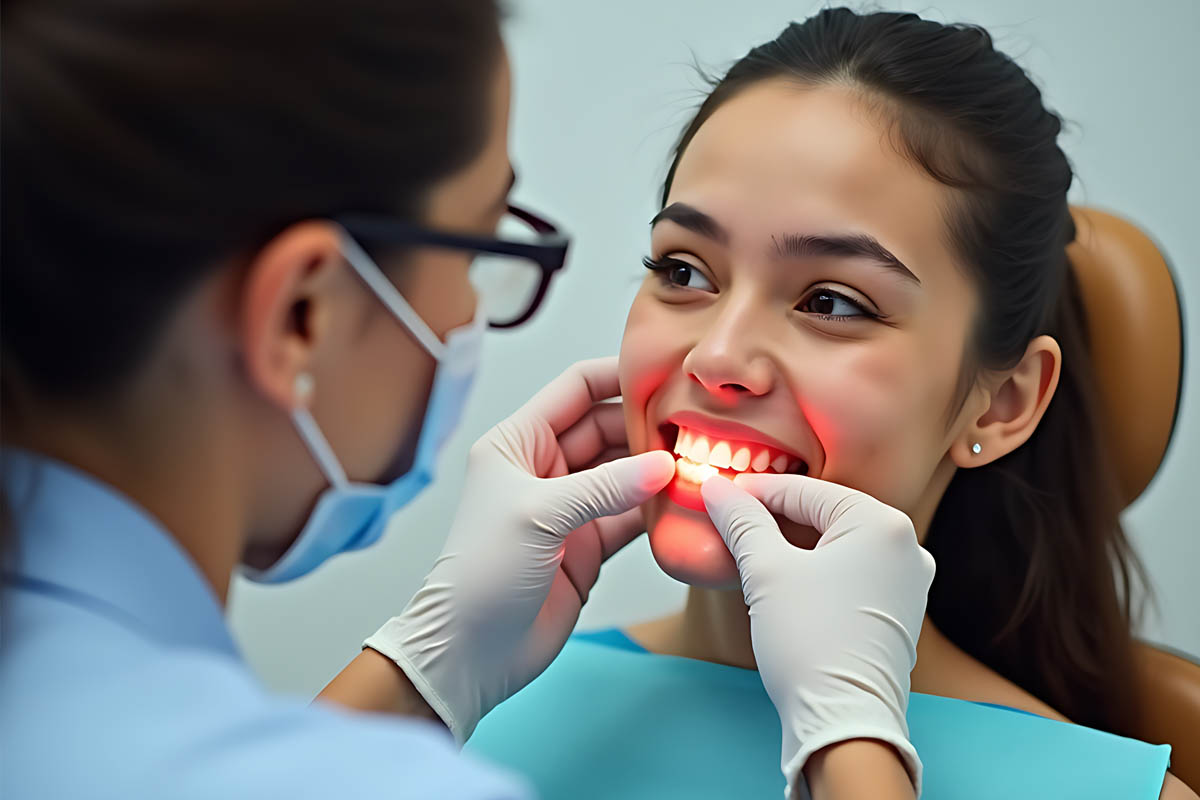Understanding Plaque and Its Harmful Effects
- 4 Dec 2024
Plaque, a sticky and colorless film of bacteria, forms persistently on the surfaces of teeth and along the gumline. This seemingly benign substance develops as bacteria in the mouth interact with food particles, sugars, and saliva. Though it might not cause immediate discomfort, plaque poses a significant threat to oral health if left unchecked. By understanding its formation, harmful effects, and prevention methods, individuals can take proactive steps to protect their teeth and gums from long-term damage.
What Is Plaque and How Does It Form?
Plaque is essentially a biofilm composed of bacteria and their byproducts. These bacteria thrive on the food debris and sugars left in the mouth after meals. When mixed with saliva, they create a sticky coating that adheres to the teeth and gums. This coating is not only unsightly but also an active breeding ground for harmful bacteria. The process of plaque formation begins almost immediately after eating, making regular oral hygiene practices critical.
Over time, if plaque is not removed through brushing and flossing, it hardens into tartar, also known as calculus. Unlike plaque, tartar cannot be removed with home dental care and requires professional cleaning. This progression underscores the importance of addressing plaque buildup early and consistently to avoid more severe dental complications.
The Harmful Effects of Plaque
The consequences of plaque accumulation extend beyond cosmetic concerns. Plaque is a primary contributor to several oral health issues, each with varying degrees of severity:
1. Tooth Decay
The bacteria in plaque produce acids as they break down sugars and carbohydrates in the diet. These acids attack the protective enamel of the teeth, leading to cavities. Over time, untreated cavities can penetrate deeper into the tooth, causing pain, infection, and even tooth loss.
2. Gum Disease
Plaque buildup near the gumline irritates and inflames the gums, a condition known as gingivitis. This early stage of gum disease causes redness, swelling, and bleeding during brushing or flossing. If left untreated, gingivitis can progress to periodontitis, a more severe form of gum disease that damages the tissues and bone supporting the teeth. Advanced periodontitis can result in tooth loss and has even been linked to systemic health issues, such as heart disease and diabetes.
3. Tartar Formation
When plaque hardens into tartar, it becomes firmly attached to the teeth and is difficult to remove without professional dental intervention. Tartar provides an even more hospitable environment for bacteria, exacerbating gum irritation and increasing the risk of periodontal disease.
4. Persistent Bad Breath
Plaque is a common culprit behind halitosis, or bad breath. The bacteria and food particles trapped within the plaque release foul-smelling compounds, leading to a persistent and unpleasant odor.
5. Tooth Loss
In its most advanced stages, plaque buildup can compromise the structural integrity of the teeth and their supporting tissues. This can result in loose teeth, tooth loss, and a diminished quality of life.
Preventing Plaque Buildup
Preventing plaque is not only possible but also manageable with consistent and effective oral hygiene practices. Here are some key strategies to keep plaque at bay:
1. Brush Regularly and Properly
Brushing your teeth at least twice a day with fluoride toothpaste is the cornerstone of plaque prevention. Use a soft-bristled toothbrush and focus on all tooth surfaces, including the gumline. Proper brushing technique ensures that plaque is removed before it has a chance to harden into tartar.
2. Floss Daily
Flossing removes food particles and plaque from between teeth and along the gumline—areas that a toothbrush cannot reach. Daily flossing is essential for preventing cavities and gum disease in these vulnerable spaces.
3. Use Antibacterial Mouthwash
Rinsing with an antibacterial mouthwash helps to reduce bacteria in the mouth, further minimizing plaque formation. Choose a mouthwash that contains fluoride for added protection against tooth decay.
4. Limit Sugary and Starchy Foods
Bacteria in plaque thrive on sugars and carbohydrates. By reducing your intake of sugary snacks, sodas, and starchy foods, you can deprive these bacteria of their primary fuel source, slowing plaque formation.
5. Stay Hydrated
Drinking water helps wash away food particles and neutralizes acids in the mouth. Staying hydrated also promotes saliva production, which is essential for naturally rinsing away plaque-causing bacteria.
6. Regular Dental Checkups
Professional cleanings remove plaque and tartar from hard-to-reach areas that may be missed during daily oral care. Dental checkups every six months also allow your dentist to monitor your oral health and address any issues before they worsen.
The Importance of Proactive Dental Care
While plaque is a natural part of the oral environment, its harmful effects are entirely preventable with consistent care and attention. Developing a strong oral hygiene routine not only protects your teeth and gums but also contributes to overall well-being. By prioritizing plaque prevention, you can maintain a healthy smile and reduce the risk of more serious dental and systemic health issues in the future.




